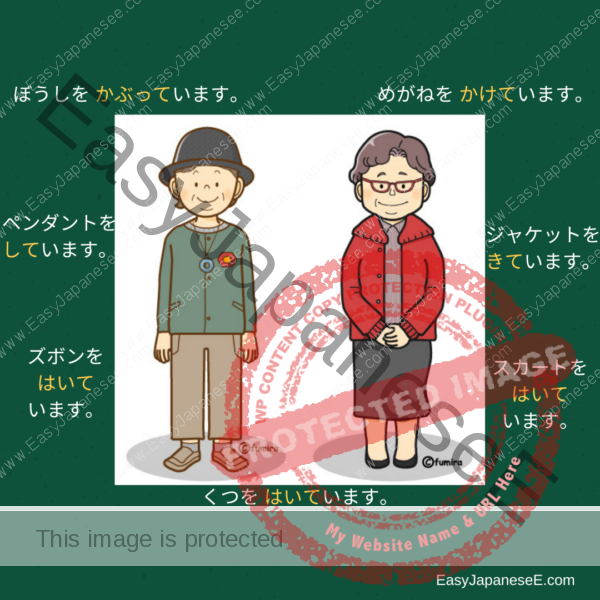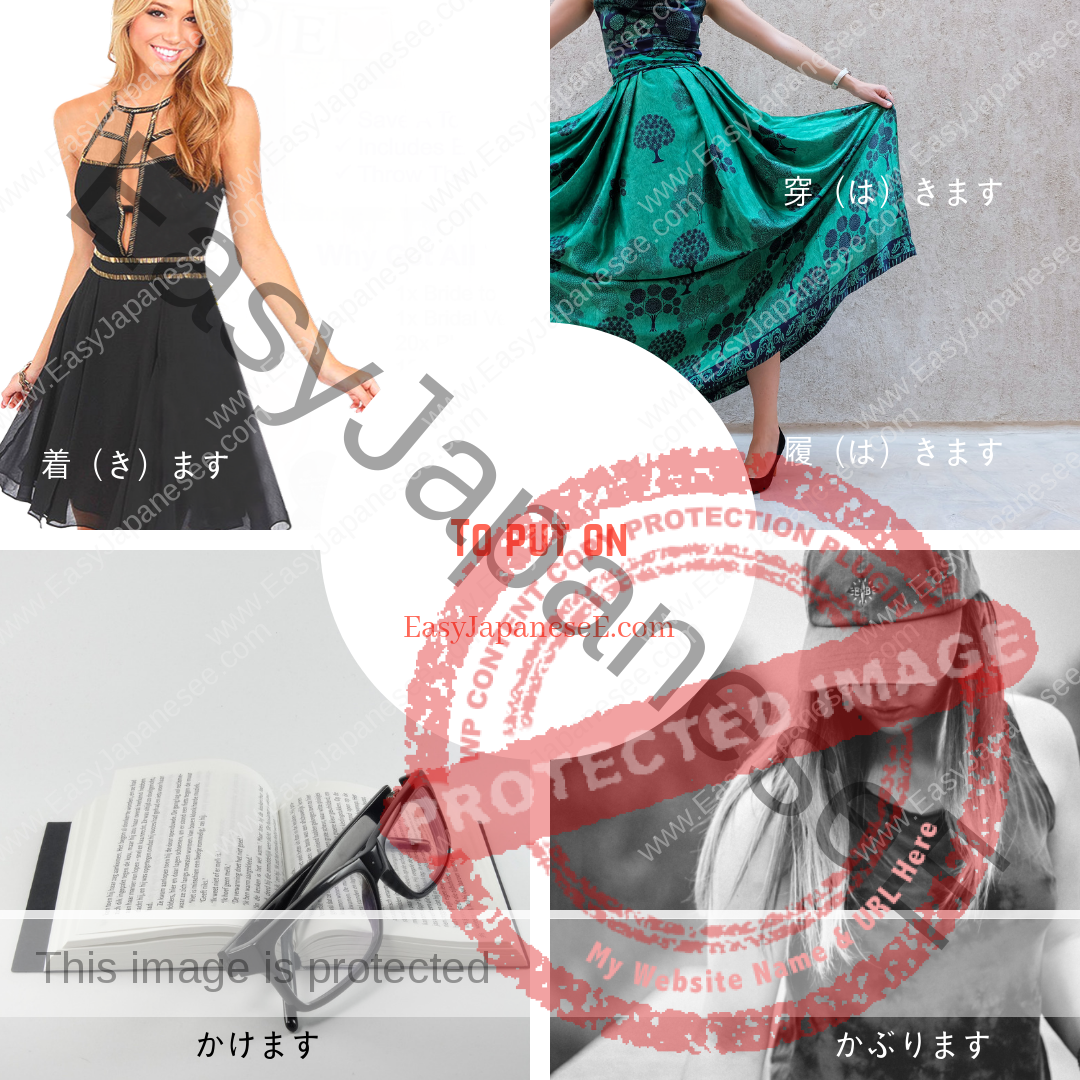Describing the action of putting your clothes on requires several different words in Japanese depending on what item of clothing you are talking about.
- 着(き)る/きます is for a top (waist up) or for a dress or suit (something that covers the whole body).
- はく/はきます is for anything waist down. For shorts, trousers and skirts, the kanji 穿く is used but this kanji is not in the 常用漢字 (everyday kanji) list, so often written in Hiragana. 履く is used for footwear such as socks and shoes.
- かける/かけます is for glasses only.
- かぶる/かぶります is for a hat or cap but かぶる/かぶります is also used when you put on a hood or scarf to cover your head.
- つける/つけます is for accessories but する/します can be also used for accessories in a casual conversation.
All these verbs above are to describe the action of “putting things on”. In order to describe the state of “having them on” (when you would use “wear” instead of “put on” in English), you need to make them into てform and add いる/います。For how to change -ます form verb into てform, please see this page.
Examples



2 Replies to “to put … on / to wear …”